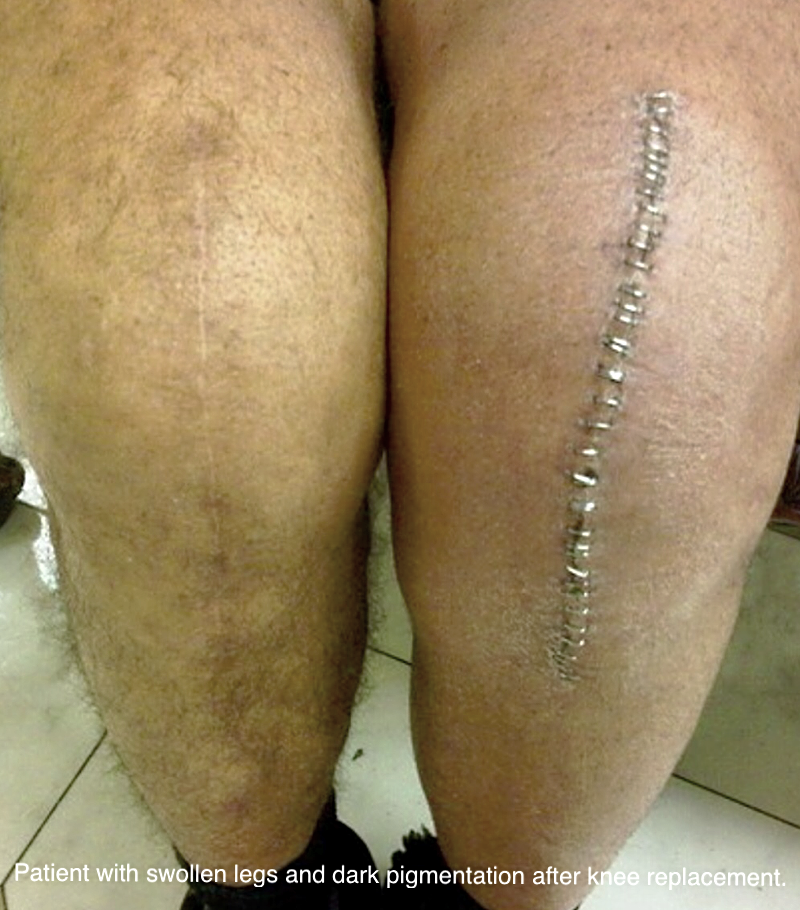- Home
- Why Truffles?
- Blog
- You Can't Run from Vein Disease
- VenaSeal
- Summer is Almost Over
- IDK about Vein Disease
- Vein Treatment Fayetteville
- Sonography to RN Degree Program
- Vein Testing Differences
- Advantage of Vein Treatment Before Knee Surgery
- Poor Medical Advice
- Green Tomatoes for Varicose Veins
- VenaSeal Treatment Atlanta
- Fake News
- Iliac Vein Compression
- Vein Treatment
- DVT
- Pelvic Health
- Sclerotherapy
- leg swelling
- The Vein Specialists
- Vein Treatments
- What is Vein Disease
- Vein Conditions
- Vascular Testing
- Look and Feel Your Best!
- Reviews
- Media
- Contact Us
- Schedule and Appointment
- Free Vein Screening
- Give Us Feedback
- Referral Resources
- Make a Payment
Orthovenous Disease
Jason, a recently retired administrator, came to Truffles Vein Specialists before proceeding with a left total knee replacement. He had experienced chronic knee pain and mild swelling for nearly a decade, however it had progressively worsened since his retirement.
“It’s true, when you retire, you find yourself suddenly more busy. With my new and busy schedule, my left knee became very swollen,” he said. “I developed a bulging lump on the inside and behind my right knee and I had difficulty even playing golf. I found myself not wanting to travel as I could only sit or drive for short periods of time”.
He made an appointment with her Orthopedic Surgeon to evaluate his problem which he assumed was the result of his glory days back in high school. He also saw his Primary Care Physician who was concerned his problem could be related to venous disease. He was then referred to Truffles Vein Specialists for venous disease assessment and was surprised by what Dr. Feldman discussed and the results of the diagnostic ultrasound.
“They did an ultrasound of both my legs and found the valves of my superficial vein was allowing the blood to flow backwards,” Jason reported. ” Brian explained what a normal vein looked like and showed me my leaking vein starting at my groin and went all the way down to just above my ankle. There were large varicosities that were under the skin hidden from sight. I had never really noticed the patterns around my left ankle. I had significant vein disease in both legs."
Knee arthritis and venous insufficiency often are seen in the same patient because both conditions affect the same population, patients over 40. Therefore, patients expected to have knee surgery, such as a knee replacement or arthroscopy and who have any signs of venous disease such as swelling or varicose veins should actively seek a venous evaluation prior to major orthopedic surgery.
Research has shown that patients who have their venous problems addressed prior to knee replacement or arthroscopy have a better outcome. Patients can decrease their postoperative risk of leg swelling and deep vein thrombosis when venous disease is addressed first. With pre-existing swelling, bulging veins or the skin changes of venous disease, vein treatment obviously improves the post-op wound healing process for these orthopedic surgical patients.
Forty million adults are affected by venous insufficiency, including one out of three people over the age of fifty. Treatment by closing defective veins is minimally invasive, taking approximately one hour with rapid recovery times. This vein treatment enhances a patient’s chance of a good post-operative knee replacement or knee procedural outcome.
If you have knee discomfort and are considering or are scheduling an orthopedic evaluation, be sure to consider your vein health. If you have varicose veins, swelling, leg heaviness or skin discoloration – or have other signs or symptoms of venous insufficiency, request a vein specialist to evaluate your venous status. Remember that you may enhance your orthopedic procedure outcome by first caring for your venous health. In some cases the pain and discomfort in the leg.

